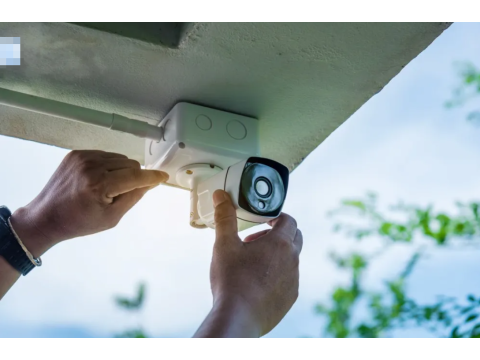Indoor Surveillance Systems
Indoor surveillance systems are essential for maintaining security in various spaces, including homes, offices, and commercial facilities. With proper equipment selection and installation, these systems provide reliable monitoring, ensuring safety and operational efficiency.
Key Features of Indoor Surveillance Cameras
1. Resolution and Image Quality
- Cameras with a resolution of at least 1080p provide clear and detailed footage.
- Higher resolutions, such as 4K, are ideal for capturing finer details in larger indoor areas.
2. Infrared (IR) Capability
- For 24/7 monitoring, cameras with infrared night vision ensure visibility in low-light conditions.
- Essential for spaces like warehouses or 24-hour office operations.
3. Compact and Aesthetic Designs
- Dome cameras are popular for their sleek design, blending seamlessly with interiors.
- Miniature cameras offer discreet monitoring options without compromising aesthetics.
4. Additional Features
- Wide Dynamic Range (WDR): Balances lighting for optimal visibility.
- Motion Detection: Reduces storage use by recording only when movement is detected.
- Audio Capabilities: Record or monitor sound for enhanced situational awareness.
Installing Indoor Surveillance
Challenges in Installation
Concealed Wiring:
- Utilize existing conduits or ceiling spaces for hidden cable runs.
Wall and Ceiling Penetrations:
- Plan strategically to avoid damage and ensure proper alignment.
Electromagnetic Interference:
- Use shielded cables in industrial settings to minimize signal disruptions.
Best Practices
- Mount cameras at a height of 8-10 feet to maximize coverage and prevent tampering.
- Overlap camera views to eliminate blind spots.
- In office environments, consider WiFi cameras for minimal cabling, especially in spaces with a robust network infrastructure.
Surveillance in Specific Environments
Office Spaces
- Prioritize employee transparency by placing cameras in common areas, hallways, and entrances.
- Avoid surveillance in private areas to comply with workplace privacy laws.
Commercial Areas
- Install cameras at entry points, cash registers, and storage rooms.
- Use high-resolution cameras for theft prevention and operational oversight.
Industrial Facilities
- Opt for rugged, vandal-resistant cameras.
- Address electromagnetic interference with shielded cables or fiber-optic connections.
Equipment for Indoor Surveillance
A basic indoor surveillance system typically includes:
- Cameras: Chosen based on resolution, coverage, and design.
- DVR/NVR: For recording and managing video feeds.
- Power Supply: Ensure consistent operation with UPS backup.
- Monitor: For live viewing and playback.
Ready-Made Kits vs. Custom Systems
While ready-made kits simplify the setup process, they may lack flexibility for larger or unique indoor spaces. Custom systems allow for tailored solutions, ensuring compatibility and optimal performance.
Conclusion
- Enhanced Security: Indoor surveillance systems provide peace of mind for homes, offices, and commercial spaces.
- Adaptable Solutions: Choose cameras and setups tailored to specific needs, from residential safety to industrial monitoring.
- Professional Installation: Proper installation ensures reliable performance and longevity of your system.
Investing in a well-designed indoor surveillance system is a proactive step toward ensuring the safety and efficiency of any indoor space.
Office Surveillance Systems
10/01/2025
Parking Lot Surveillance Systems
10/01/2025

